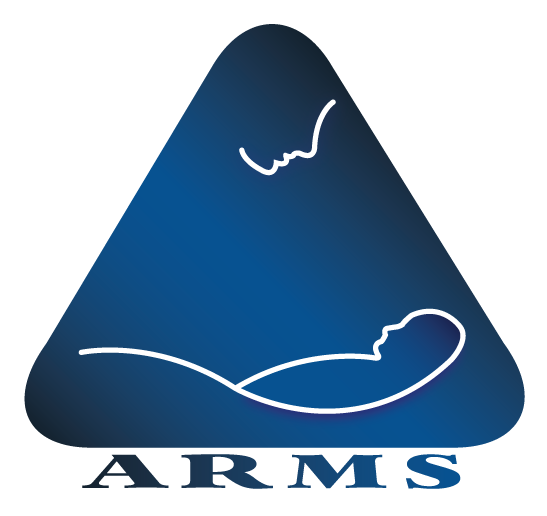Optimal IVF at a glance
- Our Optimal IVF involves fertilizing a woman’s egg(s) with a man’s sperm outside of the body in a laboratory and inserting the resulting embryo(s) back into the woman’s uterus to implant for a pregnancy.
- Optimal IVF typically offers the best chance for pregnancy in the shortest period of time for couples who are struggling to conceive due to a variety of infertility issues.
- IVF has good success rates because it bypasses many of the obstacles to conception and provides an opportunity to select the best embryo from many.
- To reduce costs and simplify the complex procedure, we offer other IVF options including Gentle IVF that uses fewer drugs, Shared Hope IVF and a simple medication version.
Questions?
Call us at (602) 351-5327 or schedule an appointment below. Let’s talk.
Book Appointment Now
What is Optimal IVF?
In vitro fertilization (IVF) involves fertilizing the woman’s egg outside her body in the IVF lab, then placing the resulting embryo back into the woman’s womb for pregnancy. For many couples, one IVF attempt is more likely to result in pregnancy than months of other fertility treatments.
In vitro fertilization means “fertilization in glass” because the laboratory dishes and containers in which fertilization occurs used to be made of glass. Advanced reproductive technologies started in 1978 with the birth of Louise Brown, born as a result of the first successful IVF. Today IVF is one of the most common advanced reproductive procedures in the world.
Our Optimal IVF is the most successful infertility treatment. Though it is not right for every patient or couple, in vitro fertilization offers most couples the best chance of getting pregnant in the shortest amount of time.
The IVF process involves several steps that take time. Couples can expect it to take from one to three months to complete a cycle of treatment.
Fresh & frozen IVF cycles
Each attempt with IVF treatment is called a cycle, and patients may try more than one cycle of treatment. A fresh cycle means the woman’s eggs are retrieved, fertilized and the resulting embryo(s) implanted in her womb during the same menstrual cycle. A frozen IVF cycle means that once the embryo forms in the lab, it is frozen to be implanted in a future menstrual cycle. In our experience, a frozen IVF cycle has the highest success rate.
The steps in the process, from testing to ovarian stimulation to embryo implantation, are detailed below.
ARMS IVF success rates
We provide honest, accurate and meaningful information on IVF success rates, as reported to the Centers for Disease Control and Prevention, so patients can make an informed decision on how to proceed on their journey to have a baby. In 2021 our live birth rate per new patient under age 35 (with no prior treatment cycles) after their first retrieval was 67.7%, and our live birthrate per person having an egg retrieval for the same age group was 69.4%.
How Optimal IVF works to increase chances of getting pregnant
The primary reason for IVF success is that it greatly amplifies the natural interaction of a single, ovulated egg and sperm by combining more eggs and sperm in the controlled environment of the IVF lab and then allowing for the selection of the best embryo available to transfer. Stimulating the woman’s ovaries with follicle stimulating hormone (FSH) enables more eggs in that menstrual cycle batch to mature, as opposed to the normal single egg.
More eggs mean more chances of fertilization success.
Continual advances in the processes, including monitoring and specific cultures the eggs and sperm are combined in, increase the chance of fertilization as well as successful embryo implantation in the womb.
Simple IVF treatment solutions
We offer our patients variations of IVF that can reduce costs, appointments and medications. Ask us about simple medication treatment that combines three medications into one daily injection.
Gentle IVF
Gentle IVF is a medication protocol that reduces the amount & types of medication to provide significant but not maximal stimulation at a 50% cost reduction.
Our Gentle IVF
Shared Hope IVF
The Shared Hope IVF Program gives patients the opportunity to receive a discount on IVF treatment by donating some of their eggs through Donor Egg Bank USA. This is the most inexpensive IVF program offered within the state of Arizona.
Our Shared Hope IVF Program
Causes of infertility that Optimal IVF treats
IVF is the first-line treatment to help women with fallopian tube abnormalities and for poor male sperm quality. We often recommend IVF when other treatments such as intrauterine insemination (IUI) have failed.
IVF also opens up the treatment options of using donated eggs, embryos and sperm to couples whose eggs and sperm are of poor quality or quantity. The following conditions affecting fertility can be treated by IVF.
Damaged or blocked fallopian tubes
IVF bypasses damaged or blocked fallopian tubes. This is where fertilization of the egg occurs naturally, and the resulting embryo must also travel through the fallopian tube to the uterus for implantation and pregnancy.
Anovulation & low ovarian reserve
Anovulation is failure to ovulate, which is the release of a mature egg during the menstrual cycle. Anovulation affects about 40% of women with infertility issues, according to the National Institutes of Health. Ovulation induction in IVF works around this and other ovulation problems, including low ovarian reserve.
Male infertility factors
These primarily relate to poor sperm quality or quantity, which are the most common causes of male infertility. Conditions like erectile dysfunction, ejaculatory dysfunction and semen abnormalities that contribute to male infertility can be treated with our Optimal IVF.
Age-related infertility
As a woman ages, the quantity and quality of her eggs decreases. With Optimal IVF we can collect the healthiest eggs for fertilization. It also allows the use of donated eggs. Male fertility can also be affected by aging.
Other infertility conditions
In vitro fertilization can help couples achieve pregnancy who have endometriosis, uterine abnormalities, unexplained infertility and other conditions.
9 ways to reduce IVF costs
ARMS offers many IVF treatment discounts and special pricing options, including those for single IVF cycles, military patients, first responder patients and more.
Steps in the Optimal IVF process
Fertility consultation
During the initial consultation we will review medical history to understand the male and female factors involved in each case of infertility. We will also discuss treatment options based on those factors to ensure that each patient’s treatment is tailored to their individual needs.
We want to make sure that each patient’s treatment has the highest probability for success. Instead of providing one type of treatment for everyone, we will perform testing to determine which option is best.
Our team of IVF doctors
The extensive training that both Dr. Drew Moffitt and Dr. Linda Nelson have received, has given our physicians a wealth of experience and exposure to some of the most complex infertility cases around the world.
Pretreatment infertility tests
Some infertility tests, such as the sonohysterogram or the hysterosalpingogram (HSG), ensure that a woman’s uterus is functioning correctly and that no untreated problems exist. Other tests, such as trial transfers, are done prior to treatment so that we can evaluate the potential for problems and prevent those that may come up during the course of treatment.
A semen analysis is often performed on men to determine whether the amount and quality of sperm are sufficient, or whether we would need to use ICSI (intracytoplasmic sperm injection) during treatment.
Infertility medications for hormone treatment
During this phase, women are given medication that causes their ovaries to produce more eggs than the single egg normally released during ovulation. Since egg retrieval is an important step of the IVF process, it is imperative that women produce as many eggs as is safely possible. This gives us the opportunity to select the best embryos to transfer first.
Later in the process, after an embryo is transferred into a woman’s uterus, she is often given another round of hormones. These hormones are used to enhance the likelihood of implantation for pregnancy.
Egg retrieval
This is the process of collecting the eggs from a woman’s ovaries. These eggs are collected under anesthesia using an ultrasound to guide the physician in locating and extracting the eggs within their follicles.
The fluid in the follicles is removed and will be examined. An embryologist then prepares the eggs for fertilization.
Fertilization
Eggs can be fertilized individually by placing thousands of sperm and one egg together in a lab dish with a special fertilization fluid. Or, depending on the quality of sperm, we may give it a boost by injecting an individual sperm into each egg with ICSI. Both procedures are performed in our lab.
These fertilized eggs, which are embryos at that point, will be cultured for five to seven days, at which time they will be frozen for transfer after the patient has recovered from the procedure.
Embryo transfer
We will transfer the embryo(s) into the woman’s uterus in hopes of it implanting and creating a pregnancy. Ideally, we prefer to transfer blastocyst embryos. These are embryos that are produced after five to seven days of culture.
Our goal is to provide the best chance for a healthy pregnancy while reducing risks to our patient and her future children. We do this by transferring a minimum number of embryos, a single embryo if possible. That’s because implanting multiple embryos results in more twins pregnancies, and that increases health risks for mother and children. Any embryos that remain after transfer can be frozen for future use.
Embryo Transfer at the Blastocyst Stage
Results
About nine days after implantation, patients will be scheduled for a pregnancy test. If the test is positive, it will indicate that the embryo(s) inserted have implanted to the woman’s uterus.
If the patient is pregnant, she will visit us again in a few weeks to determine the number and size of implantations, which develop into fetuses.
After observation of a beating heart, patients will be referred back to their obstetrician to track the remainder of the pregnancy.

Related IVF Topics
IVF Using Donor Eggs
IVF can be done using donor sperm & eggs as a fertility treatment option for male or female infertility to achieve pregnancy through one fresh IVF cycle.
Preimplantation Genetic Testing
PGT screens IVF embryos for genetic abnormalities that can cause birth defects & reduce chances of a successful pregnancy.
IUI vs. IVF
This is a comparison of IUI to IVF including which is the most cost effective fertility treatment. IVF far exceeds IUI as the best first choice of treatment for all ages.
IVF Treatment on Your Schedule
Talk to a doctor today and begin IVF treatment in as little as two weeks. We make it easy for our patients to get in, get treatment and cover costs.
IVF risks
Risks with IVF are rare (severe complications happen in less than 1/1,000 cases), but as with any medical procedure there are some risks. These include:
- Mild side effects from ovulation induction medication that can sometimes be more severe, including increased urinary frequency, abdominal pain and nausea.
- Very small chance of damage to the bladder or bowel during egg retrieval.
- Bleeding, spotting or cramping following embryo transfer.
- Twins or more if more than one embryo is transferred. A multiple pregnancy involves risks to the mother and her babies. ARMS strongly recommends the transfer of a single embryo, which limits the risk of multiple pregnancy to only rare cases of identical twinning.

